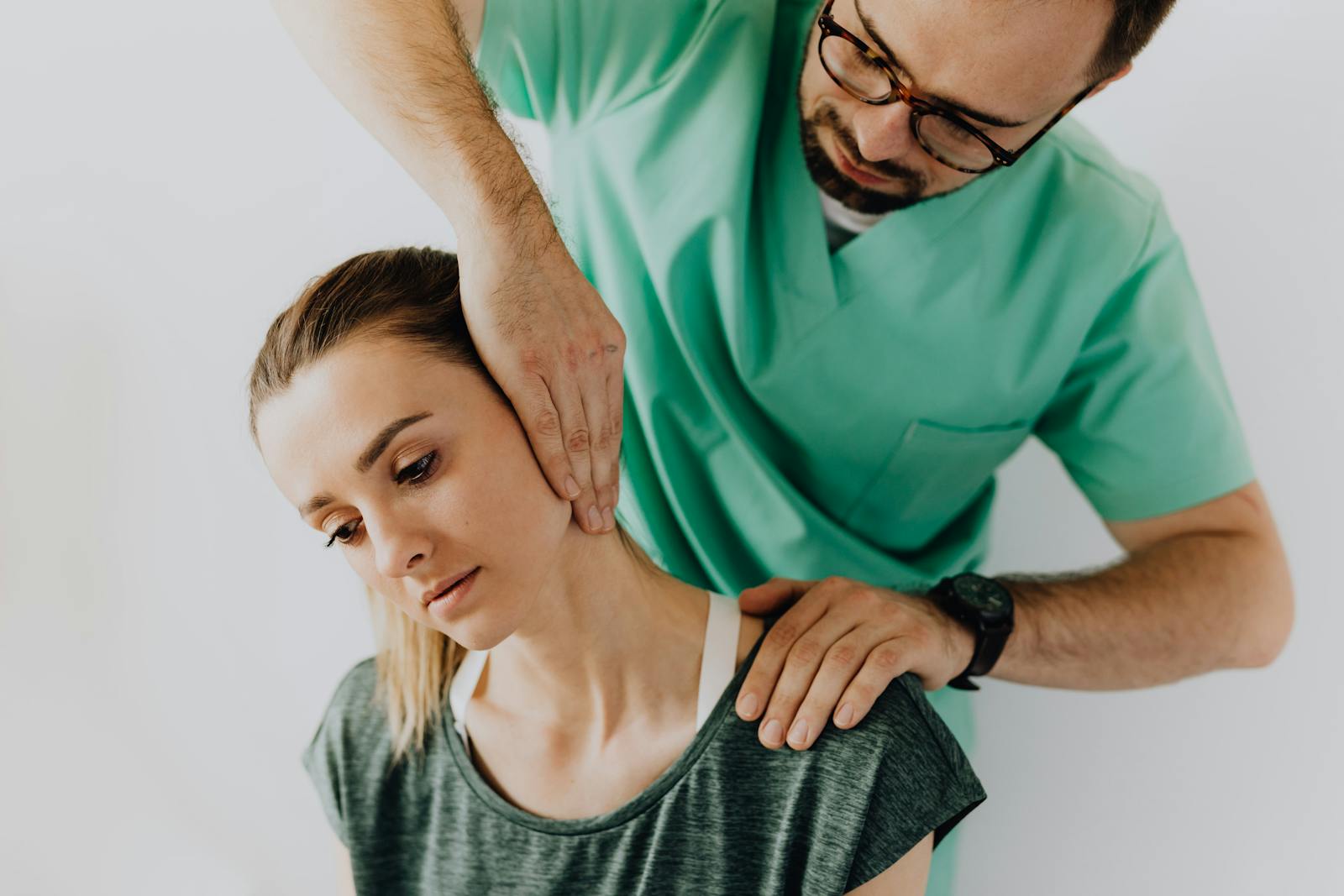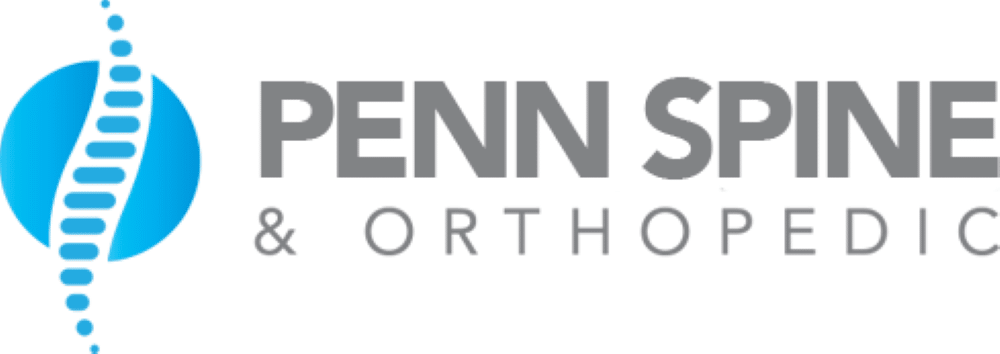As a complex condition that originates from cervical spine disorders, cervicogenic headache poses unique challenges in the areas of diagnosis and treatment. The associated pain, often localized to the neck or occipital region and triggered by specific neck movements, necessitates an in-depth understanding of the underlying anatomy and pathophysiology. Additionally, the differential diagnosis from migraines and tension-type headaches is essential for effective management. Considering its resistance to routine headache medications, what innovative treatment strategies could be explored to improve patient outcomes in cervicogenic headache?
Understanding Cervicogenic Headache
To fully understand the concept of a cervicogenic headache, it is important to explore its underlying causes, symptoms, and the scientific nuances that differentiate it from other types of headaches. Cervicogenic headaches are primarily caused by dysfunction or damage in the neck, often due to conditions such as whiplash, cervical disc degeneration, or prolonged poor posture. The referred pain manifests as a headache, often unilateral, with a steady ache or dull sensation.
The symptoms of a cervicogenic headache can mimic those of migraines or cluster headaches, making it challenging to diagnose. However, the key differentiation lies in the headache triggers. Certain neck movements or positions, exertion, and even sneezing can trigger a cervicogenic headache. Additionally, the stress relation is crucial. Chronic stress can lead to muscle tension and inflammation in the neck, acting as a catalyst for cervicogenic headaches.
In the domain of scientific examination, the cervicogenic headache has a unique characteristic: the pain is specifically connected to neck issues rather than brain anomalies, making its diagnosis and treatment markedly different from other headaches. This understanding is essential in formulating effective treatment strategies and achieving improved patient outcomes.
The Anatomy Involved
Understanding the anatomical structures involved in cervicogenic headaches requires a thorough exploration of the intricate workings of the cervical spine and its related components. The cervical spine, composed of seven vertebrae, offers support to the head and protects the spinal cord. Importantly, the upper three cervical nerves (C1-C3) and the trigeminal nerve play significant roles in the manifestation of cervicogenic headaches, often becoming active in response to abnormal tension or strain.
In cervicogenic headaches, pain is typically referred from one or more structures innervated by the upper cervical roots, most commonly the C2 and C3 segments. This referral process often involves the trigeminocervical nucleus, a region where the upper cervical nerves and trigeminal nerve converge.
Treatments like spinal manipulation and nerve blockades target these areas. Spinal manipulation, often employed by chiropractors, entails the application of controlled force to a joint in the spine, addressing the abnormal movement patterns that may be contributing to the headache. On the other hand, nerve blockades involve the injection of an anaesthetic into a specific nerve or group of nerves, disrupting the transmission of pain signals and providing relief. Therefore, appreciating the involved anatomy is essential to understanding and managing cervicogenic headaches.
Common Causes of Cervicogenic Headache
Cervicogenic headaches can be triggered by a variety of causes, most commonly associated with abnormal activities or conditions affecting the cervical spine and its associated structures. These headaches are often the result of cervical osteoarthritis, herniated discs, whiplash injuries, or other traumas. Each of these factors contributes to the degeneration or injury of the cervical spine, leading to the propagation of pain signals from the neck to the head.
The stress influence on cervicogenic headaches cannot be underestimated. Chronic stress can lead to muscle tension and stiffness, particularly in the neck and shoulders, which may exacerbate or trigger cervicogenic headaches. Additionally, poor posture, often related to occupational habits or lifestyle, can impose additional strain on the neck, further contributing to the development of this condition.
Lifestyle adjustments can have a significant impact on the frequency and intensity of cervicogenic headaches. Improvements in ergonomics, regular physical exercise, and stress management techniques can help in reducing the stress on the cervical spine, thereby mitigating the risk of cervicogenic headaches. However, the exact cause and contributing factors may vary significantly from one individual to another, necessitating a personalized approach to management and treatment.
Identifying Symptoms
The identification of cervicogenic headache symptoms requires detailed analysis of headache patterns, a thorough understanding of its correlation with neck pain, and a precise evaluation of the duration and intensity of the headache. This approach necessitates careful discernment of these variables to guarantee accurate diagnosis and best treatment strategies. Hence, each of these factors forms an essential component of our ensuing discussion.
Recognizing Headache Patterns
A significant proportion of patients experiencing chronic headaches may actually be dealing with cervicogenic headaches, a condition characterized by distinct symptom patterns. Recognizing these patterns is vital in the correct diagnosis and subsequent management. Headache triggers can involve physical activities, certain postures, or even external stressors. The perception of pain often starts at the back of the head, gradually radiating to the front, and is typically unilateral. The intensity and duration of the pain can vary; however, it often presents as a dull, constant ache, sometimes escalating during specific activities. It is also important to mention that cervicogenic headaches can be accompanied by additional symptoms such as blurred vision, nausea, and sensitivity to light or sound. Understanding these headache patterns is essential in differentiating cervicogenic headaches from other types.
Link to Neck Pain
Building on the understanding of headache patterns, it becomes increasingly apparent that neck pain serves as a prominent symptom in diagnosing cervicogenic headaches. Misalignment or abnormality in neck posture often exacerbates this pain, indicating a possible cervicogenic cause. A detailed analysis shows that patients with poor neck posture, often due to prolonged periods of desk work or excessive use of mobile devices, are more prone to this condition. Additionally, ineffective stress management often leads to muscle tension in the neck region, thereby intensifying the headache. Neck pain, often intertwined with neck posture and stress, plays an important role in the diagnosis, with a careful assessment of these symptoms guiding the accurate identification of cervicogenic headaches.
Understanding Duration and Intensity
Comprehending the duration and intensity of headaches offers significant insights into the identification of cervicogenic symptoms. These symptoms, often triggered by certain activities or habits, can be mitigated through various lifestyle changes.
An analytical approach to understanding the duration and intensity of cervicogenic headaches involves consideration of the following factors:
- The frequency and duration of the headache episodes
- The severity of pain during each episode, typically on a scale of 1-10
- The specific triggers that exacerbate the headache, such as certain positions or movements
- The effectiveness of lifestyle changes or treatments in reducing headache frequency and intensity
Differentiating From Other Headaches
To deepen our understanding of cervicogenic headaches, it is imperative to discern them from other types of headaches, such as migraines. This differentiation is based on select characteristics and symptoms. In the ensuing discussion, we will draw sharp distinctions between cervicogenic headaches and other related conditions, primarily focusing on migraines, by comparing their respective symptoms and attributes.
Identifying Cervicogenic Headaches
The process of identifying cervicogenic headaches necessitates a keen understanding of their unique characteristics, as these headaches stand apart from other types due to their specific origin in the neck. Recognizing these headaches involves discerning their distinct triggers and employing effective stress management techniques.
- Cervicogenic headaches often present as a steady, non-throbbing pain at the back and side of the head, spreading to the forehead.
- They are typically triggered by neck movements or sustained awkward head positions, unlike other headaches which may be triggered by factors like food, drink, or stress.
- These headaches often correspond with neck pain and stiffness.
- Effective stress management, including relaxation techniques and physical therapy, may help reduce the frequency of these headaches.
Understanding these factors can aid in the identification and treatment of cervicogenic headaches.
Migraines Vs Cervicogenic Headaches
Distinguishing between migraines and cervicogenic headaches requires a detailed understanding of their distinctive symptoms, triggers, and the regions of the head that they affect. Migraines, typically characterized by unilateral, throbbing pain, are often accompanied by nausea, vomiting, and sensitivity to light and sound. Triggers often include hormonal changes, certain foods and drinks, and lack of sleep. Stress management is critical in managing migraines. Conversely, cervicogenic headaches, emanating from the neck, present as a steady, non-throbbing pain, typically on one side of the head. The pain can be triggered by neck movement or a particular neck position. Understanding these differences aids in appropriate diagnosis and treatment plan formulation. Both conditions, however, underscore the importance of identifying and managing headache triggers.
Cervicogenic Headache Symptoms
Building on the nuances between migraines and cervicogenic headaches, we will now explore the specific symptoms associated with cervicogenic headaches that differentiate them from other types of headaches.
These symptoms can act as ‘headache triggers’, prompting individuals to make necessary ‘lifestyle adjustments’. The distinguishing symptoms include:
- Pain that is localized to the neck or occipital region, often radiating towards the front of the head.
- Symptoms are typically unilateral, affecting only one side of the head.
- The headache is provoked or aggravated by specific neck movements or positions.
- There is usually a resistance to routine headache medications, differentiating it from migraines and tension-type headaches.
Understanding these unique symptoms can help in accurate diagnosis, leading to effective treatment strategies.
The Diagnostic Process
In order to accurately diagnose cervicogenic headaches, a thorough medical history evaluation and physical examination are essential first steps. The diagnostic challenges lie in distinguishing cervicogenic headaches from other types of headaches such as migraines or tension-type headaches, as their symptoms often overlap. Medical imaging, such as MRI or CT scans, can help to identify the presence of cervical spine anomalies or degenerative changes, which are commonly associated with cervicogenic headaches.
The physical examination should focus on the cervical spine and its surrounding structures. Limited range of motion, tenderness, and muscle tightness in the neck are often found in patients with cervicogenic headaches. Additionally, maneuvers that provoke the patient’s headache, such as placing the neck in certain positions, can further support the diagnosis.
The diagnostic process for cervicogenic headaches also involves ruling out other potential causes of the patient’s symptoms. Therefore, an in-depth understanding of the patient’s medical history, lifestyle factors, and other potential risk factors is important.
Importance of Accurate Diagnosis
The precision of diagnosing cervicogenic headaches is of paramount importance to both clinical outcomes and patient wellbeing. Misdiagnosis can lead to ineffective treatments, unnecessary procedures, and prolonged patient suffering. A meticulous exploration and understanding of various diagnostic methods is thus essential in ensuring correct identification of this condition.
Identifying Cervicogenic Headaches
Diagnosing cervicogenic headaches accurately is essential, as it drives the selection of effective treatment strategies, ultimately reducing the patient’s discomfort and improving their quality of life. Understanding the headache triggers and how these headaches impact the patient’s lifestyle is vital.
Identifying cervicogenic headaches involves:
- Recognizing the unique pain pattern, typically starting at the neck and radiating towards the front of the head or eyes.
- Observing a restricted range of neck motion or neck and shoulder muscle tenderness.
- Noting headache triggers, including certain neck movements or posture.
- Evaluating lifestyle impacts, such as disturbed sleep or decreased productivity at work.
A detailed, scientific approach in diagnosis can pave the way towards a tailored, effective treatment plan.
Misdiagnosis Consequences
Misdiagnosing cervicogenic headaches can lead to ineffective treatment strategies, prolonged patient discomfort, and potential exacerbation of underlying cervical conditions. The misdiagnosis impact is substantial, often leading to treatment delays that prolong patient suffering and impede their quality of life. It’s crucial to understand that a cervicogenic headache is a secondary headache, originating from the cervical spine’s dysfunction rather than the head. Hence, treating it as a primary headache can lead to unnecessary pharmaceutical interventions and insufficient focus on treating the neck issues, causing the problem. The consequences are not just physical, but also emotional and financial, as patients may be subjected to repeated, costly, and ineffective treatments. Therefore, the importance of accurate diagnosis of cervicogenic headaches cannot be overstated.
Diagnostic Methods Explored
Exploring the maze of diagnostic methods becomes vital to accurately identify cervicogenic headaches, thereby enabling targeted treatment strategies and mitigating the risk of protracted patient suffering. Precision in diagnosis is integral, necessitating an exhaustive approach that incorporates various examination methods.
- Radiographic Assessment: This imaging technique aids in visually identifying structural abnormalities in the cervical spine that may be causing the headaches.
- Physical Examination: Evaluation of the patient’s neck mobility and pain response offers valuable insight into potential cervicogenic headache.
- Medical History Evaluation: Thorough review of the patient’s past medical and headache history can provide clues to the condition.
- Diagnostic Nerve Blocks: These can confirm the cervicogenic headache if the patient experiences significant relief post-procedure.
Each of these methods contributes to a holistic diagnostic strategy, greatly enhancing the accuracy of cervicogenic headache identification.
Various Treatment Options
When it comes to managing cervicogenic headaches, patients are presented with a variety of treatment options, each with its own set of merits and drawbacks based on the individual’s specific condition and needs. Treatment plans are typically individualized, integrating multiple therapeutic interventions, ranging from alternative therapies to surgical interventions.
Alternative therapies, such as acupuncture, chiropractic treatment, and physiotherapy, have shown considerable success in alleviating cervicogenic headache symptoms. Acupuncture, for instance, can stimulate specific anatomical points, promoting natural self-healing. Chiropractic treatment, on the other hand, focuses on spinal manipulation to improve physical function and relieve pain.
Surgical interventions become a consideration when conservative methods fail to provide adequate relief. These can include nerve blocks, where an anesthetic is injected around the affected nerve to numb the area, or radiofrequency denervation, a procedure that uses heat to disrupt nerve function and prevent pain signals from reaching the brain. In more severe cases, surgery may be required to correct underlying structural issues in the neck. However, these more invasive options carry greater risks and require careful consideration.
Regardless of the chosen approach, it is important that the treatment plan is tailored to the patient’s specific needs and lifestyle, ensuring effective management of cervicogenic headaches.

Pain Management Techniques
Beyond the domain of alternative therapies and surgical interventions, a distinct set of pain management techniques offers an additional layer of relief for individuals grappling with cervicogenic headaches. These techniques, grounded in scientific evidence, provide a multifaceted approach to manage this type of headache, focusing both on reducing pain severity and enhancing the quality of life.
- Physical Therapy: Physical therapy, particularly manual therapy targeting neck muscles, has been shown to provide relief in cervicogenic headaches. Techniques such as neck stretches and strengthening exercises can help minimize pain.
- Medication: Non-steroidal anti-inflammatory drugs (NSAIDs), muscle relaxants, and even some types of antidepressants can be effective in managing pain.
- Biofeedback and Stress Management: Biofeedback helps in understanding the body’s response to pain and in developing strategies to manage it. Stress management, including relaxation techniques and mindfulness, can also be beneficial as stress is a known trigger for these headaches.
- Nerve Blocks: Nerve blocks, which involve injecting medication around specific nerves in the neck, can provide temporary relief from severe pain.
These techniques, along with alternative therapies, can be instrumental in managing the pain associated with cervicogenic headaches.
Preventative Measures
Preventative measures for cervicogenic headaches, grounded in rigorous scientific research, can markedly reduce the frequency and severity of this debilitating condition. The primary focus of these measures lies in two key areas – posture correction and sleep positioning.
Poor posture, particularly during prolonged sitting or standing, can place unnecessary strain on the neck and upper back muscles, leading to cervicogenic headaches. Corrective measures include maintaining a neutral spine position, ensuring regular movement and breaks, and using ergonomically designed furniture. Specific exercises aimed at strengthening the neck and upper back muscles can also be beneficial in maintaining proper posture.
Sleep positioning, on the other hand, plays a significant role in preventing cervicogenic headaches. Unnatural neck positions during sleep can exacerbate cervical spine issues leading to these headaches. It is advisable to avoid sleeping on the stomach, which can strain the neck. Utilising a supportive pillow that maintains the natural curvature of the neck can also be beneficial.
Living With Cervicogenic Headache
Getting through daily life with cervicogenic headache requires a thorough understanding of the condition, as well as a strategic approach to managing its symptoms and triggers. Adapting to the chronic nature of this condition may seem challenging, but it is feasible when equipped with the right knowledge and tools.
Lifestyle modifications and stress management are two key elements for successfully living with cervicogenic headache.
Here are a few strategies that can be employed:
- Regular Exercise: Engage in low-impact activities like walking or swimming. Regular exercise can improve overall health and reduce tension in the neck, subsequently reducing headache frequency and intensity.
- Postural Adjustments: Maintain a good posture while standing and sitting. Bad posture can exacerbate headaches by straining neck muscles.
- Workplace Ergonomics: Adjust your work setup to minimize neck strain. This may involve using an ergonomic chair or standing desk.
- Stress Management Techniques: Stress can often trigger cervicogenic headaches. Incorporate techniques such as yoga, mindfulness, meditation, or cognitive-behavioral therapy into your routine to manage stress levels.
Frequently Asked Questions
What Is the Prevalence Rate of Cervicogenic Headaches in the General Population?
The prevalence rate of this specific type of headache in the general population varies, influenced by numerous headache triggers. Treatment options also affect prevalence, as effective management can reduce the frequency and severity of occurrences.
Can Cervicogenic Headaches Lead to Any Long-Term Health Complications?
Long-term health complications can arise if headaches lead to chronic pain. Identifying headache triggers and exploring treatment options are vital steps in preventing potential chronic conditions and enhancing overall health outcomes.
Do Certain Lifestyle Choices Increase the Risk of Developing Cervicogenic Headaches?
Certain lifestyle choices can indeed escalate the risk of developing such conditions. Poor posture can negatively impact the cervical spine, while stress may enhance muscular tension, both contributing to a greater likelihood of issue onset.
Are Cervicogenic Headaches More Common in Certain Age Groups or Genders?
Headache diagnosis reveals that certain age groups and genders may be more susceptible to specific types of headaches. Treatment options are often tailored considering these demographic factors for effective management and mitigation of symptoms.
Is There a Genetic Factor Involved in the Development of Cervicogenic Headaches?
The genetic factor’s role in the development of certain headache types remains a topic of ongoing research. Understanding genetic influences can potentially illuminate headache triggers and inform more personalized treatment options.


